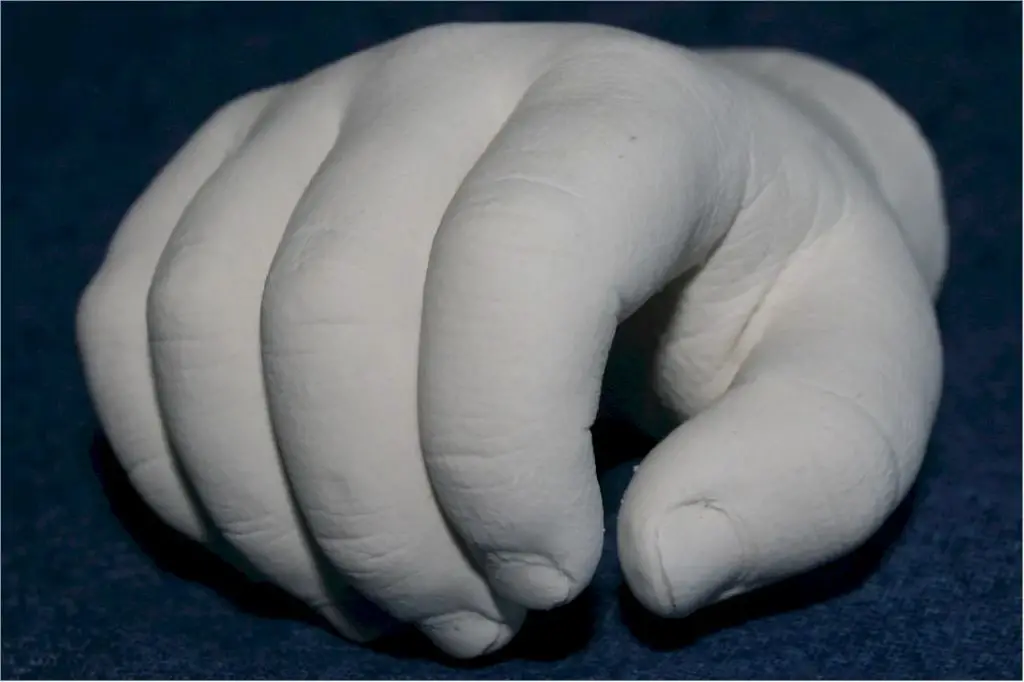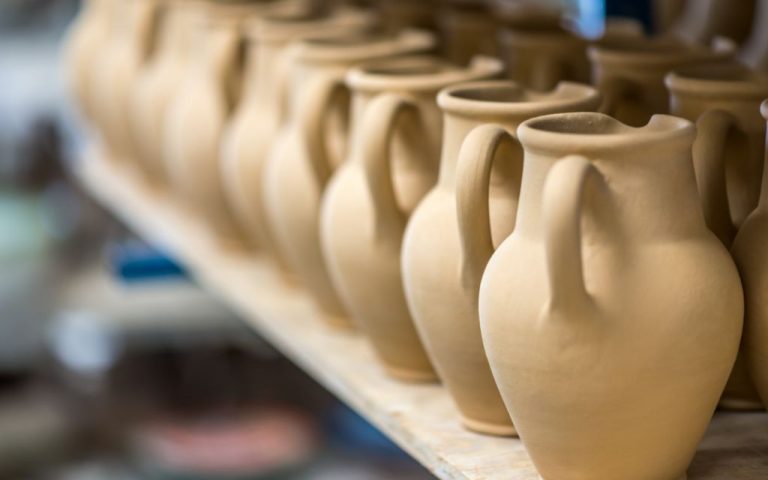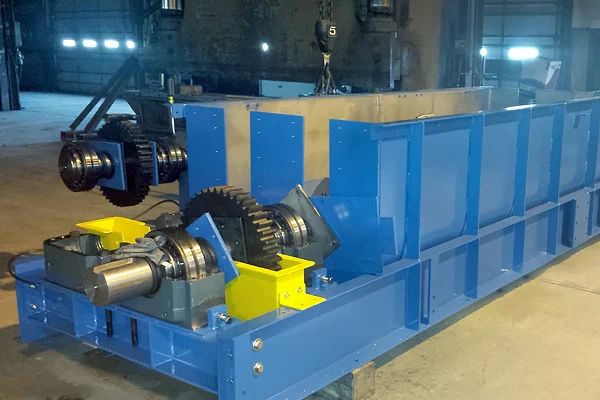What Is The Meaning Of Mould Of Clay?
A mold of clay is a hollowed-out shape in clay that can be used to cast or replicate an object. Molds are often made out of clay due to its malleable properties that allow it to be easily shaped and hold its form.
The use of molds and casting with clay has a long history dating back thousands of years. Evidence of early clay molds have been found from ancient Mesopotamia, Egypt, and China where they were used to make everything from pottery vessels to metal castings for tools and jewelry (Ceramic molding). Creating molds allowed early civilizations to mass produce objects and led to advancements in metallurgy and manufacturing techniques.
Clay’s ability to be shaped and retain its form when dry makes it an ideal material for mold making. Clay molds can be used to cast objects out of plaster, wax, concrete, metal alloys, glass, and more. The clay takes on the exact shape of the original model or object that needs replicating. Once the clay dries, the mold is ready to be filled with casting material to create an exact copy of the original.
Today, clay molds continue to be used by artists, crafters, and manufacturers around the world for casting and molding. The simplicity, versatility, and cost-effectiveness of clay ensures its popularity as a mold making material.
What is Clay?
Clay is a naturally occurring material that consists primarily of fine-grained minerals formed from the decomposition of rocks over long periods of time and exposure to the elements. According to Geogirl (https://www.geogirlscience.com/geoscience-videos/v/bb8gwhsfnyd8yn8l6k8jfrefc8g53t), clay is composed of extremely small particles, typically less than 0.002 mm in size, which gives clay unique properties and characteristics.
The main component of clay is silicon dioxide, also known as silica. However, it also contains other minerals like aluminum, magnesium, sodium, calcium, potassium, and iron. The varying composition gives different types of clays their distinct colors and textures.
When wet, clay becomes highly plastic and moldable. As it dries, the clay particles bond together tightly, allowing clay to maintain its molded shape. Firing clay at high temperatures makes it permanently hard and solid. These properties make clay a versatile material for crafting pottery, sculptures, tiles, bricks and more.
Types of Clay
There are several main types of clay used for mold making and pottery, each with their own distinct properties.
Earthenware Clay
Earthenware clay is one of the most commonly used types of clay. It’s made from sedimentary clays and has a coarse texture. Earthenware fires at lower temperatures compared to other clays, typically between 1500°F – 2100°F. It’s porous and absorbent after firing. Common uses for earthenware clay include pottery, ceramic sculptures, and decorative objects.
Stoneware Clay
Stoneware clay is dense, with low absorbency and slight porosity. It becomes vitrified and waterproof at higher firing temperatures between 2200°F – 2400°F. Stoneware clay is versatile, durable, and resistant to thermal shock. It’s often used for pottery, tableware, and art objects.
Porcelain Clay
Porcelain clay is very fine and dense, giving it a smooth, delicate texture. It can be fired at extremely high temperatures up to 2350°F. Porcelain becomes glass-like, non-porous, and vitrified after firing. It’s commonly used for pottery, sculptures, dolls, and other decorative items.
Creating Molds with Clay
Molds made of clay can be created using a variety of techniques. One popular method is to shape the clay directly by hand to form the desired mold cavity. The clay should be kneaded well and be free of air bubbles before shaping to ensure smooth surfaces. Another technique is to press existing objects into the clay to leave an impression. Found objects like shells, leaves, or beads can create interesting textures. The clay can also be rolled out and cut to create geometric cavities, or draped over an existing form. Cutters and various sculpting tools allow for more precision (1).
Some tips when working with clay for molds include avoiding undercuts which could lock the finished cast into the mold, creating registration keys for multi-part molds, and smoothing the surface to remove fingerprints. The clay thickness should be at least 1/4 inch to retain its shape. Allow the mold to firm up slightly during shaping to hold finer details. Clay molds are best suited for simple, single castings. More complex molds are possible but may require very strong clay (2). With some creativity and practice, crafters can produce clay molds for a variety of projects.
Drying and Firing Clay Molds
Properly drying and firing clay molds is a crucial step in creating usable molds. Clay that is not fully dried can crack or warp in the kiln. Here are some tips for drying clay molds:
- Allow molds to air dry slowly at room temperature. Don’t rush the drying process.
- Place molds in a warm, dry area out of direct sunlight. You can use a food dehydrator on low heat.
- Monitor molds as they dry. Look for cracks appearing which signal uneven drying.
- Support molds as they dry to prevent sagging and distortion of the shape.
- Test molds for dryness. They should feel cool, solid, and lighter in weight.
- Once fully dry, molds are ready to be bisque fired according to the clay manufacturer’s instructions.
- Firing too hot or fast can cause cracks or bloating of the clay.
- Allow molds to cool fully before handling after firing.

With proper drying and firing, clay molds will be strong, stable, and ready for casting materials into them.
Uses of Clay Molds
Clay molds have a variety of uses, most commonly for metal casting, ceramics, and sculpture. Some key uses of clay molds include:
Metal Casting – One of the primary uses of clay molds is for metal casting. Molten metal can be poured into a clay mold and allowed to harden, producing metal parts and objects. Clay molds can withstand the high temperatures required for metal casting. This technique has been used for centuries to cast bronze, iron, and other metals (Polytek).
Ceramics – Clay molds are often used in ceramic production. The mold provides the shape and form for ceramic pieces. Liquid clay is poured into the mold and allowed to harden. The mold is then removed, revealing the finished ceramic product. This allows for mass production of ceramic items with consistent sizing and shapes.
Sculpting – Sculptors may use clay molds to reproduce sculptures. Once an original sculpture is complete, a clay mold can be made from it. The mold allows identical clay sculptures to be produced from the original. This saves significant time compared to sculpting each piece individually.
Jewelry Casting – Jewelry makers can use clay molds to cast precious metals into jewelry settings. The clay withstands the heat of molten gold, silver, or platinum being poured into the mold. Once cooled and solidified, the metal retains the shape and detail of the clay mold.
Concrete Casting – Clay molds can also be used to provide shapes and forms when casting concrete. The wet concrete takes on the inverse shape of the clay mold. When dried, the mold is removed, leaving a concrete piece. This is useful for constructing concrete architectural elements.
Advantages of Clay Molds
Clay offers several advantages over other materials for creating molds, especially when it comes to sculpture and casting:
Clay is very pliable and easy to shape by hand, allowing artists to craft intricate designs and details. It also retains fine detail well when used as a mold material. According to Slavery in the Circuit of Sugar, Second Edition: Martinique and the French Atlantic (https://books.google.com/books?id=zf-dCwAAQBAJ&pg=PA269&lpg=PA269&dq=%22advantages+of+clay+molds%22&source=bl&ots=6Vrtk4BT4f&sig=ACfU3U1RkxSjOt3SIBK5b7rhMLlruQ-wgQ&hl=en&sa=X&ved=2ahUKEwiBmtf1lr-EAxVrrZUCHZx_C6kQ6AF6BAgJEAM), clay molds were valued for their ability to capture intricate designs in sugar sculptures.
Clay is porous, allowing air and moisture to pass through gradually as the molded material cures. This prevents cracking and defects. Other rigid mold materials don’t “breathe” as well.
Clay is accessible and affordable, especially natural clays dug locally. It’s far less expensive than machined metal or plastic molds.
Clay molds can be shaped into complex 3D forms, unlike rigid sheet-metal forming dies. This enables organic, free-form designs.
The surface texture of clay molds can be modified to give molded pieces a customized finish.
Clay is reusable. Molds can be recycled and reshaped after use. It also biodegrades safely when discarded.
Limitations of Clay Molds
While clay molds offer many benefits, they also have some limitations and disadvantages that artists should be aware of:
Clay molds can be fragile and prone to cracking or breaking, especially in the drying and firing process. Mishaps in manufacturing can also result in poor mold quality and issues with releasing the clay. Intricate clay molds may lose fine details and precision (source).
Clay shrinks as it dries, so molds must account for shrinkage or the finished product may not fit properly. Clay also expands and contracts with temperature changes, further complicating mold making (source).
Molds can only capture texture and details on one side of a sculpted piece. The backside will be flat. For a fully handcrafted look, additional sculpting is required after casting from the mold.
While clay is versatile, it lacks the durability and longevity of materials like stone or metal. Finished clay pieces must be handled with care. For artists seeking to create monumental works, clay may not suit the scale or permanence desired.
Overall, clay molds require patience, technique, and problem-solving skills to overcome limitations. With practice, many artists find the benefits outweigh the challenges.
Notable Clay Artists
Clay molds have been used by artists for centuries to create beautiful and intricate works of art. Some of the most famous clay artists known for their mastery of mold-making techniques include:
Bernard Leach was an influential British studio potter who helped establish the studio pottery movement (https://artfilemagazine.com/famous-ceramic-artists/). He became skilled at making plaster molds to recreate forms and decorative elements. Leach’s molding techniques allowed him to produce consistent editions of his popular artistic styles.
Viola Frey was an American sculptor best known for her larger-than-life ceramic sculptures of people. She would often make press molds of entire figures or body parts to produce her detailed sculptures (https://www.thebeginningartist.com/ceramicists/). Her oversized ceramic figures have been displayed prominently in museums and public spaces.
Other famous ceramic artists like Peter Voulkos, Ruth Duckworth, and Betty Woodman also incorporated molds into their unique clay artworks. Their innovative approaches to molding clay have inspired countless ceramic artists to this day.
The Future of Clay Molds
Clay molds have been used for centuries, but new innovations and technologies are shaping the future of this artform. 3D printing allows artists to rapidly prototype designs with digital clay before creating the final mold (Source 1). Computer numeric control (CNC) milling machines can also cut clay molds with precision and speed. Additionally, new clays like polymer-based clays offer more flexibility and durability for complex designs (Source 2). Artists are also experimenting with unconventional mold materials like sand, plaster, and silicone for unique textures and finishes. While traditional hand-sculpting skills remain important, technology is providing more options for efficiency, experimentation, and creativity with clay molds.


